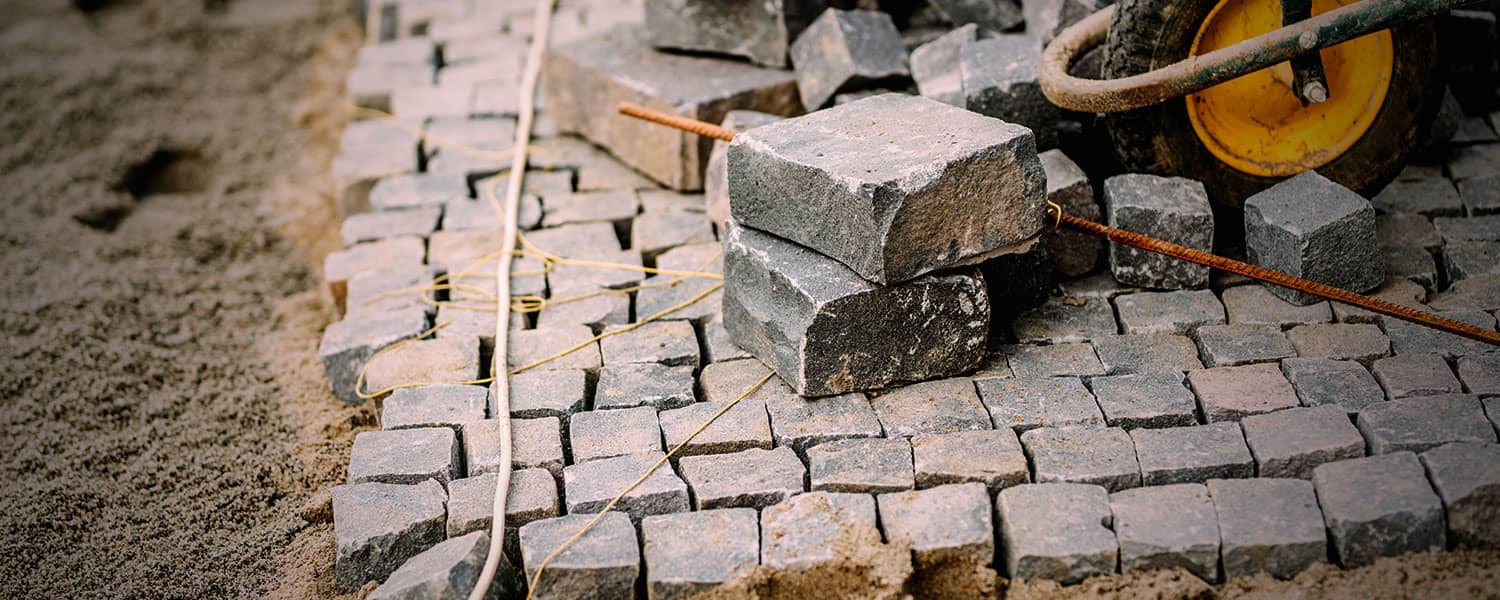If you’re serious about the life of your landscaping business, it’s time to identify and eliminate The 9 Deadly Wastes. If left untreated, they’ll spread like stubborn weeds and kill your growth.
‘Lean Thinking’ for Landscapers’
The ‘lean’ concept originated in the manufacturing industry and has been adopted by the world’s most successful manufacturers to increase efficiencies by eliminating wasteful activity. When applied to the service industry, it’s possible to eliminate 50% (or more!) of the cost of doing any activity.
Time to ‘Get (Un-) Wasted’!
Anytime your people are working on processes that do not directly add value to the customer, these processes are considered WASTE. Let’s take a look at the 9 most common landscaping business wastes and how you can minimize or eliminate them.
Waste #1: Overproduction
“Anything in excess is poison.”
Producing more than is required or getting something ready before it’s needed happens more than we’d like to admit.
Think of your Dad hosting the annual family BBQ. How many times did your Mom say, “That’s way too much food Frank!” And now your family’s eating sausages and potato salad for a week. Ordering too much (and in some cases, too soon!), can lead to materials waste and an overcrowded job site.
Over-excavation, for example, is not uncommon in pools and patio areas. Digging 12” instead of 10” may not seem like much of a difference but those extra 2” add up to extra costs in time and materials. When it comes to design-build jobs, it is possible to be over-prepared.
Overproduction can be avoided. Make sure your crews have what they need, when they need it through a combination of proper training and effective design.
WASTE # 2: Waiting
“The waiting game is no fun at all.”
Waiting is clearly a complete waste of time. And because time is money, profits decrease by the minute when labor or resources are waiting for the next step to begin.
We see examples of crews ‘on stand by’ all the time. From waiting for the operation manager’s instructions and equipment arrivals to waiting in line for fuel or for supply deliveries, when it comes to your bottom line it doesn’t pay to play the waiting game.
Properly scheduling work is one way to avoid long wait times. Attend a scheduling webinar to learn how.
WASTE #3: Transportation
“Out with the old, in with the new.”
For the most part, transportation is a necessary waste. That said, there are times when it’s excessively wasteful, like when it’s related to equipment that’s shared, old or poorly maintained. Sharing equipment between crews may seem like a way to save money but the time lost transporting equipment between sites translates to lost revenue.
When old equipment breaks down, it needs to be transported to a repair facility, a replacement needs to be transported to the job site and then both must eventually be transported back to their proper locations. And while the equipment is being transported, crews are less productive, labor costs are rising, and job schedules are extending.
To reduce transportation waste, ensure each crew is properly equipped and invest in quality equipment (vs. repairing old equipment). Learn how to Leverage Equipment to Boost Your Bottom Line.
WASTE #4: Unnecessary / Extra Processing
“Progress means simplifying, not complicating.”
In the landscape business, it’s not uncommon to see companies who institute multiple inspections and/or sign-offs or foremen who are required to complete paperwork that never gets used by the office.
In a misguided attempt to be thorough or minimize errors, we often add unnecessary steps to simple tasks.
Case in point:
- Step #1: The estimator drafts an estimate for pricing.
- Step #2: Accounting creates POs or orders for vendors.
- Step #3: Crews write their daily logs,
- Steps 4,5,6…: Accounting enters daily log info 2-3 times in 2-3 different systems, i.e. payroll, invoicing, job costing/ job tracking.
Grab your team and take a critical look through your processes. See what could be done faster, better and as a result, more efficiently. Good news: All of the manual paperwork and repetitive processes can be replaced with a streamlined landscape business management system that takes an estimate all the way through to job costing.
WASTE #5: Unnecessary Inventory
“If it doesn’t matter, get rid of it.”
Although your accountant may treat inventory as an asset, it’s important to realize that inventory is an operating cost. Inventory that goes obsolete or spoils needs to be identified and trashed.
Chances are, you still have spare parts for obsolete tools that are collecting dust. Old tools hanging around in a trailer take up valuable space and create clutter. Plant material inventory that’s ordered to the office but isn’t properly maintained will die and turn to waste.
It’s time for some Spring cleaning. Ship plant material directly to the job site. When it comes to tools, it might be time to declutter. Read 4 Ways to Declutter your Landscape Business.
WASTE #6: Defects
“If you’re going to do it, do it right the first time.”
Defects result from lack of training, care and/or quality control and can be very costly in terms of the following:
- Time wasted on the initial work
- Cost of the rework
- Dealing with customers regarding defects
- Costs related to replacement materials, deliveries, etc.
- Damage from a lost referral, or dissatisfied customer
- Frustration of employees who have to repeat work
As important as it is to set employees up for success with proper training, it’s equally important that owners set a standard of excellence across the company. Clean trucks and trailers, crisp uniforms and organized work spaces go a long way toward encouraging employees to take pride in their work and the company.
WASTE #7: Unnecessary Motion
“A place for everything and everything in its place.”
Yet, how much time do crew members spend looking for parts? Poor workflow design, bad layouts, disorganized work stations and inconsistent work processes all lead to unnecessary motion.
Getting paver pallets delivered before you need them will translate to labor hours wasted moving these pallets around the job site until it’s finally time for installation.
Work areas should be setup in a manner that maximizes productivity and minimizes motion back and forth. An organized tool trailer minimizes motion.
WASTE #8: Human Talent or Potential
“Hire people that are brighter than you are and then, get out of their way.”
As companies grow, so do opportunities for owners to delegate tasks and responsibility. Owners who fail to leverage the skills and potential of their employees are wasting talent.
Fostering a company culture where ideas are not only welcome, but rewarded will lead to greater efficiencies in your business and in turn, a healthier bottom line. When you start tying bonuses and raises for key employees to financial improvements, you’ll start seeing less turnover and better talent joining your team.
For tips on creating a winning team, read A Landscaper’s Guide to Attracting and Keeping the Best People.
WASTE #9: Resistance to Change
“Nothing changes if nothing changes.”
Fear of change is a major contributor to waste, especially in the landscape industry. The “…but we’ve always done it this way” mentality means companies hang on to old, inefficient processes much longer than they should. This way they avoid both the risk and the investment required to implement change.
From reinventing work processes and upgrading equipment to firing underperforming employees and implementing technology, change can be challenging. But when changes are designed to eliminate waste, the rewards will increase efficiencies and profitability for your business.
Now that we’ve identified The 9 Deadly Deadly Wastes, it’s time for you to calculate the cost of waste to your business. Download The Real Cost of Waste spreadsheet today.
Opportunities to improve your landscaping business are everywhere. If you’re having trouble uncovering them, turn to the people that do the work day in and day out. You’ll be surprised at the ideas they have to help your business flourish.




